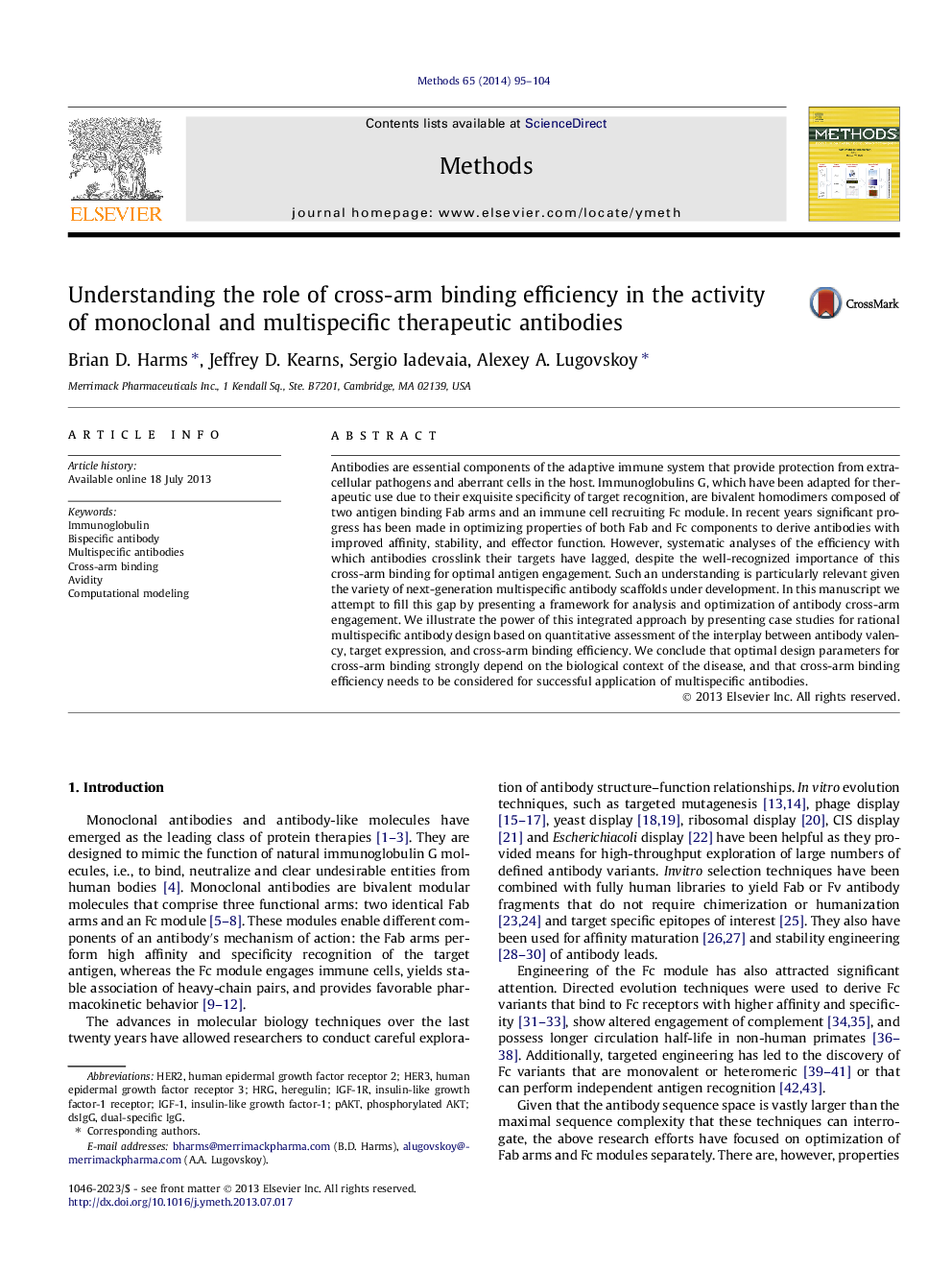| کد مقاله | کد نشریه | سال انتشار | مقاله انگلیسی | نسخه تمام متن |
|---|---|---|---|---|
| 10825832 | 1064678 | 2014 | 10 صفحه PDF | دانلود رایگان |
عنوان انگلیسی مقاله ISI
Understanding the role of cross-arm binding efficiency in the activity of monoclonal and multispecific therapeutic antibodies
ترجمه فارسی عنوان
درک نقش بازده اتصال متقابل دست انداز در فعالیت های آنتی بادی های مونوکلونال و چندین مشخصه درمانی
دانلود مقاله + سفارش ترجمه
دانلود مقاله ISI انگلیسی
رایگان برای ایرانیان
کلمات کلیدی
HER2HER3IGF-1IGF-1RpAktHRGhuman epidermal growth factor receptor 3bispecific antibody - آنتیبادی بخصوصیAvidity - آویتیinsulin-like growth factor-1 - انسولین مانند عامل رشد 1immunoglobulin - ایمونوگلوبولینheregulin - اینجاphosphorylated Akt - فسفروئید آکتComputational modeling - مدل سازی محاسباتیHuman epidermal growth factor receptor 2 - گیرنده عامل فاکتور رشد اپیدرمی انسان 2Insulin-like growth factor-1 receptor - گیرنده فاکتور 1 رشد انسولین
موضوعات مرتبط
علوم زیستی و بیوفناوری
بیوشیمی، ژنتیک و زیست شناسی مولکولی
زیست شیمی
چکیده انگلیسی
Antibodies are essential components of the adaptive immune system that provide protection from extracellular pathogens and aberrant cells in the host. Immunoglobulins G, which have been adapted for therapeutic use due to their exquisite specificity of target recognition, are bivalent homodimers composed of two antigen binding Fab arms and an immune cell recruiting Fc module. In recent years significant progress has been made in optimizing properties of both Fab and Fc components to derive antibodies with improved affinity, stability, and effector function. However, systematic analyses of the efficiency with which antibodies crosslink their targets have lagged, despite the well-recognized importance of this cross-arm binding for optimal antigen engagement. Such an understanding is particularly relevant given the variety of next-generation multispecific antibody scaffolds under development. In this manuscript we attempt to fill this gap by presenting a framework for analysis and optimization of antibody cross-arm engagement. We illustrate the power of this integrated approach by presenting case studies for rational multispecific antibody design based on quantitative assessment of the interplay between antibody valency, target expression, and cross-arm binding efficiency. We conclude that optimal design parameters for cross-arm binding strongly depend on the biological context of the disease, and that cross-arm binding efficiency needs to be considered for successful application of multispecific antibodies.
ناشر
Database: Elsevier - ScienceDirect (ساینس دایرکت)
Journal: Methods - Volume 65, Issue 1, 1 January 2014, Pages 95-104
Journal: Methods - Volume 65, Issue 1, 1 January 2014, Pages 95-104
نویسندگان
Brian D. Harms, Jeffrey D. Kearns, Sergio Iadevaia, Alexey A. Lugovskoy,
